In this series of articles, we’ll shine a spotlight on some of the world’s best underwater photographers. Today we highlight Tanya Houppermans.
Tell us a bit about yourself.
I began diving in 2009 but didn’t become interested in underwater photography until 2014. I am primarily a wide-angle underwater photographer, and my specialty is sharks since I am heavily involved in shark conservation. Home is Fredericksburg, Virginia in the United States. My husband and 21-year old son are also divers, and we especially enjoy taking dive trips together as a family.
How long have you been an underwater photographer?
I started taking pictures underwater shortly after I bought my camera in the spring of 2014. At that point I never imaged becoming a professional photographer. I had been a mathematician for the U.S. Department of Defense, and then I was hired as a research operations analyst for a large defense contractor. I was miserable in the corporate world though, and in the summer of 2015, I left my office job to become a full-time underwater photographer and marine conservationist.






What got you interested in underwater photography?
There were two reasons I became interested in underwater photography. First, I hoped to create images of sharks that would motivate the public to care about them. After learning about just how many sharks are killed by humans every year and how some species are on the verge of extinction, I wanted to do something to help. The second reason that I wanted to take pictures underwater was to document my son’s journey as a scuba diver with autism. My son Richard is 21 years old now, and he has been diving since he was 17. He was certified through the Handicapped Scuba Association, and he loves to dive. When people see images of Richard diving, I hope that it helps to dispel misconceptions about what those with disabilities are capable of.
What’s your favorite style of underwater photography?
I’m definitely a wide-angle photographer. Although I have shot a bit of macro, I enjoy big things — shipwrecks, manatees, dolphins, turtles, sea lions, and of course sharks.
Any favorite subjects?
It’s no surprise that sharks are my favorite subjects. After all, they’re part of the reason I picked up a camera in the first place. I’ve been in the water with over 15 different shark species so far, and there are still so many more species I want to photograph.
Any favorite destinations?
My favorite dive destination is North Carolina on the east coast of the U.S. It’s wide-angle photographer heaven. Between the hundreds of shipwrecks that line the coast, and the immense variety of large marine life such as sand tiger sharks, barracuda, southern stingrays, dolphins, and large schools of jacks, there is never a lack of subjects.
What’s your underwater setup?
Up to this point I’ve used the Olympus OM-D E-M1 camera body, Olympus 8mm f/1.8 fisheye lens for wide angle, Olympus 60mm f/2.8 lens for macro, Nauticam housing, Zen DP170 glass dome port, Nauticam macro port, and i-Divesite Symbiosis SS-2 strobes. However, as of my next dive trip I will be moving on to the Olympus OM-D E-M1 MkII with Isotta housing and ports.
Do you have any tips you can share with new underwater photographers?
I’d like new underwater photographers to remember that even us pros take a LOT of unusable images. Every time I go out to shoot, there are several images that are overexposed, underexposed, out of focus, etc. For every image that the public sees, I’ve probably deleted another 20 to 30 or more. So, don’t be too hard on yourself if you only get a few good shots during a day’s diving. But do take a look at those photos that didn’t work out and ask yourself what you could have done differently. Never stop learning, and never stop trying to improve.
By guest author Tanya Houppermans
Find more of Tanya Houppermans’ work on her website.

